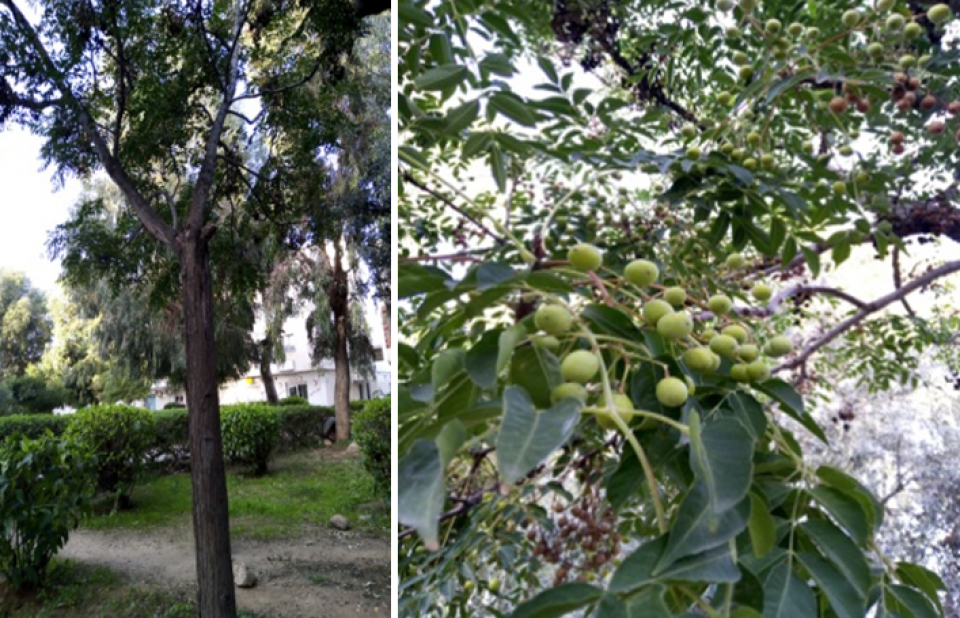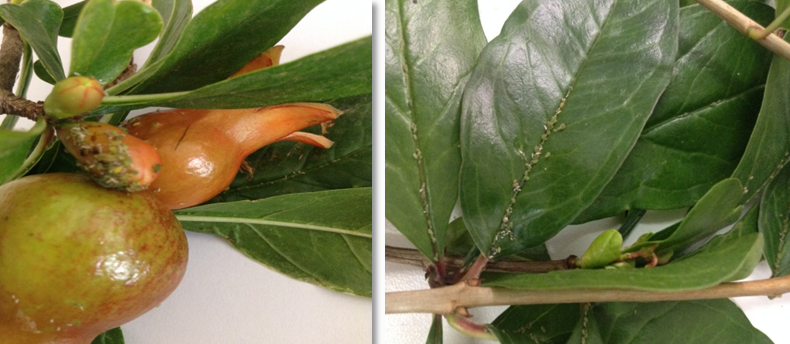
Melia azedarach, also called Lilas of indes, classified under the family of Meliaceae. It is an ornamental tree native to India, presented in several countries of tropical and subtropical regions, especially in Tunisia. The objective of this study is the valorization of plant extracts in the manufacture of organic products to minimize the import of chemicals to human health and the environment.
We are interested in studying some biological activities of Melia azedarach extracts. For this, aqueous, acetonic and ethanolic extracts of Melia leaves and fruits were tested for their ability to prevent free radical scavenging and entrainment. Similarly, we studied the effect of these extracts on the proliferation of pathogenic bacteria, as well as their ability to block the development of aphids.
The leaves and fruits of Melia azedrach are rich in secondary metabolites such as alkaloids, tannins, saponins. The acetone extract from the leaves of the Medenine samples showed the highest values with a content of about 235 µg EAG / mg DW of total polyphenols and 23.26 µg EQ / mg DW of flavonoids. The results of the antioxidant activity of iron chelation, trapping of the free radical DPPH and reduction of cation radical ABTS, showed an important anti-radical power of sheets of Medenine compared to the extracts studied, with an IC50 rather weak. On the other hand, extracts of Meliaazedarach showed significant insecticidal activity, on the development of pomegranate aphid (Aphispunicea), with a median lower dose of 3 mg / ml.
This study, of the importance of the biological activities, extracts of vegetables, it deserves to be deepened. Thus, it is desirable to:
• Vary the concentrations in order to find an extract-growth ratio (minimal inhibitory concentration, maximum bactericidal concentration ...).
• Correlate the structure of Melia active metabolites with their biocidal functions.
• Characterize, after partial or complete purification, the complete structure of terpenes via techniques such as GC / MS and nuclear magnetic resonance.
• Extend this study to a number of insects and other multi-resistant bacteria, including klebsials.
• Improve analytical methods for biological products (insecticide, fungicide, etc.) and enhance the value of local plants and a healthy environment.
Extracts of Melia azedarach L. can at certain concentrations inhibit the development of other useful insects, so doses must be determined in order to protect auxiliaries and the environmental balance more generally.
Valuing a species is always a cumulative work that needs to be improved and refined. For the work we have done for the moment, we will focus on the exploitation of different organs of Melia azedarach in the field of biologic agriculture as a bactericide, fungicide and insecticide.
Ibtissem Tgahouti
Authors: Amani MAHDHI, Mariem EL ALOUI,Tarek ZAMMOURI , Khaled ZERRIA, Abdelwahed LAAMOURI
E-mail: amanimahdhi1@gmail.com
Further information
Munir A, Sultana B, Babar T, Bashir A, Amjad M & Hassan Q (2012). Investigation on the antioxidant activity of leaves, fruit and stem bark of Dhraik (Meliaazedarach). Europ J ApplSci, 4(2): 47-51.
Sen Antara and BatraAmla, 2012, Meliaazedarach L. – A Paradise tree, Journal of Functional and Environmental Botany p59-p69
Amani Mahdhi

Amani Mahdhi
